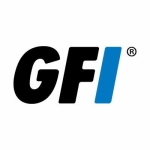What is our primary use case?
Palo Alto Networks NG Firewalls are being used for cloud security in our organization. Along with that, we have implemented SD-WAN, secure access, and XDR. These are the primary firewalls that we have in place.
Essentially, we have almost all of their products across their three suites.
How has it helped my organization?
The previous brand we used had a steeper learning curve for our engineers and analysts compared to Palo Alto, which is easier to use.
We also have an excellent partner in Costa Rica who works with Palo Alto's team there, providing valuable support. Overall, our experience with Palo Alto has been very positive.
What is most valuable?
Some of Palo Alto Networks NG Firewalls' valuable features are their powerful capabilities and user-friendliness.
Our security team has found it easy to learn and obtain the necessary certifications and training from Palo Alto.
Overall, we have had a very positive experience with this suite of solutions, including the training they have provided us.
We like the Palo Alto ecosystem and how its different suites of products integrate seamlessly.
The sharing of information has enhanced our security posture as a company. Overall, our experience with Palo Alto has been very positive.
I believe that It is important that the firewall integrates machine learning to take advantage of all the information that is available, all the data that is available.
You have to integrate machine learning AI and things like that to be able to be a step ahead of the hackers.
Using Palo Alto Networks NG Firewalls, we have experienced zero downtime.
The solution is user-friendly, which is important as it allows us to concentrate on other essential aspects of the company rather than spending time and effort maintaining the solution.
What needs improvement?
The level of control and granularity in terms of rule customization could be enhanced. However, compared to our previous solution, Palo Alto provides much better drill-down capabilities.
It is a solid solution.
For how long have I used the solution?
We have been using Palo Alto Networks NG Firewalls for six years.
What do I think about the stability of the solution?
It is a very solid, stable solution. We haven't had any issues with it, you know when we have to do updates there are no problems whatsoever. it's a very good solution.
What do I think about the scalability of the solution?
Scalability is an important issue. It is very scalable.
We are currently protecting around 11,000 endpoints.
How are customer service and support?
In my experience, I would rate the technical support a ten out of ten.
They are excellent.
How would you rate customer service and support?
How was the initial setup?
Initially, I was involved in the setup, but then other team members took over and completed the work. In the end, we reviewed and went over the setup together.
What about the implementation team?
We had a lot of support from their local partner So it was very straightforward at the time.
I didn't come across any significant issues, but as engineers, we are always prepared to face challenges.
Nowadays, nothing works as simple as plug-and-play like it used to be. However, we try to reduce the likelihood of issues as much as possible by working closely with project managers and performing thorough preparations beforehand.
Before doing the implementation. It was okay.
What was our ROI?
I believe we have seen a return on investment.
The time we used to spend on various tasks previously has significantly reduced with the implementation of Palo Alto Networks.
The system is very reliable with no downtime, providing us with a sense of security that is important in cybersecurity.
What's my experience with pricing, setup cost, and licensing?
The price of Palo Alto Networks NG Firewalls is high, but it is worth it if you have the budget for it.
Budget is always an important factor in decision-making, but it was within our budget, and we were impressed by what we heard, tested, and experienced with Palo Alto.
It is difficult to know and assume the thought process of others. If they have budget constraints, there may be other manufacturers with a lower price point that would be a good fit. We try to evaluate from different angles, not just the budget, but also the technology and how it will fit with our needs. We look for strong capabilities where necessary, such as with Sophos and WatchGuard for smaller companies.
It can be difficult to know the thought process behind a company's decision when it comes to choosing a firewall solution. Budget constraints may play a role, and there are other manufacturers that offer lower price points, which can be a good option. However, it's important to consider technology and how it fits with the company's needs, as well as the strength of the solution.
Smaller companies like Sophos and WatchGuard also offer solid platforms, and they may be a good fit for those looking for a lower price point. Ultimately, it's important to assess what's important for the company and find a solution that fits those needs, both in terms of functionality and price.
Which other solutions did I evaluate?
Our process for evaluating firewall solutions usually involves consulting Gartner for their feedback, having sessions with our analysts, and focusing on the leading firewall manufacturers.
We evaluated several firewall manufacturers, including Check Point and Fortinet, but ultimately, we as a group decided that Palo Alto was the best fit for us.
The decision was not solely mine but rather made by our managers based on the evaluations and presentations given by each vendor.
We were particularly impressed with Palo Alto's presentation and even visited their headquarters located south of San Francisco. And we just felt comfortable, and it was a good decision.
What other advice do I have?
The RSA sessions have been very informative and enjoyable. Today is actually my last day at the expo, and I've been visiting some of the manufacturers that we already work with as well as some that I want to learn more about. Overall, I think it's been a great experience.
From an engineering standpoint, the expo is a great opportunity to connect with knowledgeable people beyond the marketing façade. It's worth investing time to engage with them, learn about their products and solutions, and find out what they're working on and what's upcoming.
Attending RSA has had a significant impact on our company's cybersecurity purchases for the next year. In fact, I am here with two other colleagues who are actively researching and taking notes on various companies and their offerings. They are gathering valuable information to inform our future purchasing decisions.
We've been coming here for many years now, and we'll not come back. It's a good place to get up to date on what's happening.
I would rate Palo Alto Networks NG Firewalls a ten out of ten.
Disclosure: My company does not have a business relationship with this vendor other than being a customer.













